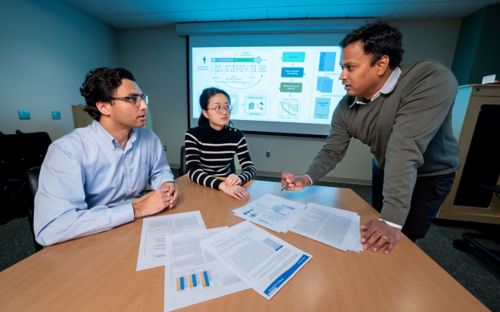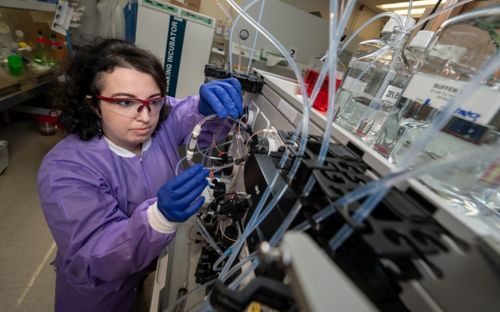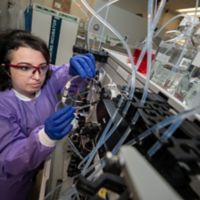Skin cancer in children isn’t the same as in adults

A statue of St. Jude Thaddeus on the campus of St. Jude Children’s Research Hospital is silhouetted by the sun. Be aware of the signs of sun damage when it occurs – it could be a sign of skin cancer.
Children can get skin cancer.
In fact, melanoma, the most serious form of skin cancer, is the most common form of skin cancer in children.
“As we approach the late spring and summer months, parents should be mindful of extreme sun exposure for their children,” said Alberto Pappo, M.D., director of the St. Jude Solid Tumor Division.
What to look for
Melanoma gets its name from melanocytes, skin cells that produce a pigment called melanin, which gives skin its color. Melanoma’s danger lies in its ability to spread to other parts of the body.
While melanoma occurs in most adolescents, it also occurs in young children. Symptoms for children include moles that change, an odd-shaped or large mole, a pale-colored or red bump or a mole or bump that itches or bleeds. Adolescent symptoms are more similar to adults, where moles have become asymmetric or changed in color, size or border.
“Our research shows that sun damage contributes to melanoma in children and adolescents,” Pappo said. “This underscored the need for precautionary measures to help avoid extreme sun exposure for children.”
To prevent extreme sun exposure in children:
- Use of Sunscreen to Prevent Sunburns — Sunscreen should be broad spectrum (effective against both UVA and UVB rays) and at least 15 SPF, although there is little evidence that anything above 50 SPF provides additional protective effects.
- Regular Reapplication of Sunscreen is Necessary — Water-resistant sunscreens does NOT mean it should be applied only once. No more than a couple of hours should pass between applications, especially if one is sweating and in and out of the water.
- Avoid Tanning Beds — The increase in melanoma among teenagers is partly due to their use of tanning beds. The International Agency for Research on Cancer has determined that indoor tanning beds increase melanoma risks 75% in people who begin using them before the age of 30.
- Avoid Going Outdoors When Sun’s Rays are the Strongest — Between 10 a.m. and 2 p.m., children should avoid direct UV rays as best possible.
- Infants Younger than 6 Months of Age, No Sun at All is Best — They can be at the beach or outdoors this summer, but need to be covered up, have on a hat and cover up their neck and extremities. It is best to avoid sunscreen on babies younger than 6 months old because they can get significantly more exposure to the chemicals in sunscreen compared to older patients.
- Early Diagnosis is Key – If a child has a mole, parents should make their pediatrician aware as soon as possible. Early identification and removal of melanoma is critical. If caught early, chances for survival are significantly high and early detection means less invasive surgical procedures may be necessary, as well as a decreased chance of the tumor spreading.
St. Jude Children’s Research Hospital is a leader in pediatric melanoma research and treatment. Each year, St. Jude provides treatment and second opinions for patients with pediatric melanoma around the country and beyond.






